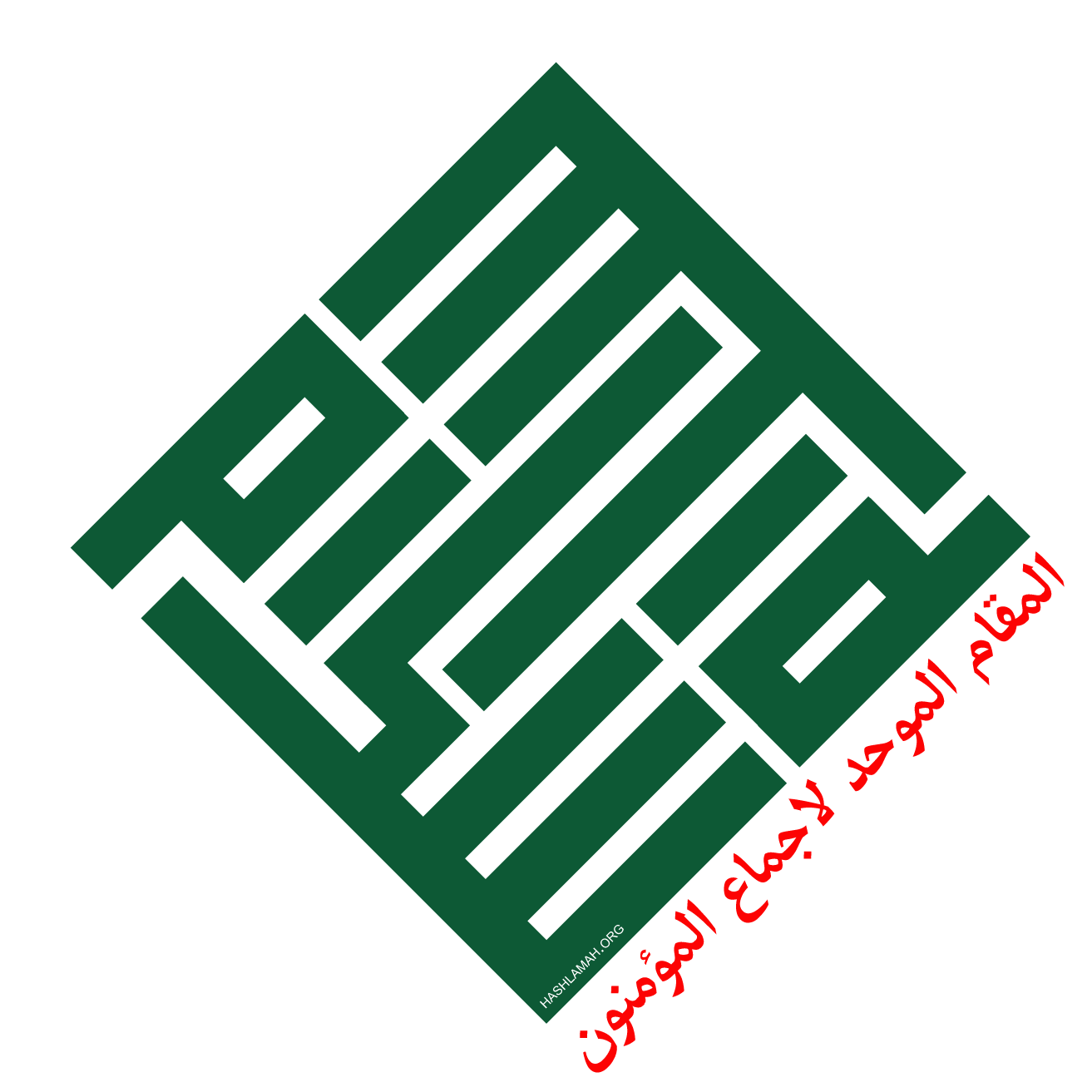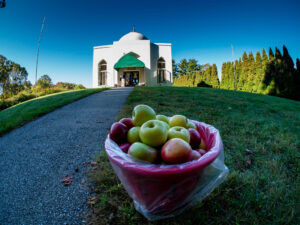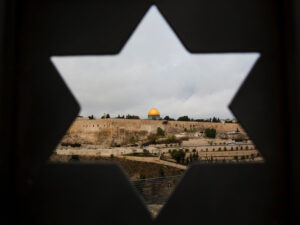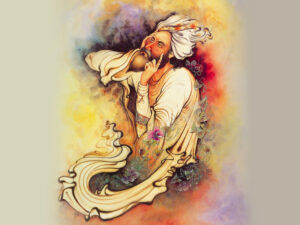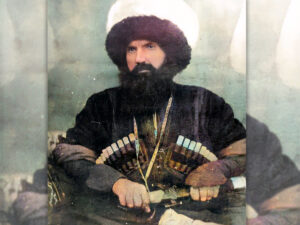This list is far from complete, but it is a good starting place for facilitators of Hashlamah Project Study Circles. If there is a work written by Micah David Naziri of the Midwest Hashlamah Project Chapter, you may feel free to request it – free of charge, for donation if you are able to afford it – for your edification. Selections from these works can be printed out and used in discussions, when and however they prove conducive to dialog. Other works, particularly primary works from the Medeival Judeo-Sufi movements, should be obtained in hardcopy form and will constitute recommended reading for all regular Hashlamah Study Circle Participants, along with the Masters thesis of Micah Naziri:
People of the Book: What the Religions Named in the Qur’an Can Tell Us About the Earliest Understanding of “Islam”
http://www.amazon.com/People-Book-Religions-Understanding-ebook/dp/B008DGH8T4/
Facilitators , however, may obtain this thesis by request free of charge. Primary and further secondary sources are discussed below:
Primary Sources
Primary source discussion might begin a study session meeting with a brief summary of the week’s parshah reading from the Torah, and related haftarahreading, correlated with a passage from the Qur’an which might related to the story, either directly referring to a story in that parshah, or related thematically. A Jewish facilitators can ask a Muslim facilitators for recommendations on this, or vice versa, a Muslim facilitators could ask a Jewish facilitators about that week’s parshah.
Recommended secondary reading on approaching the Qur’an in this manner is the essay:
The Qur’an as Midrash: Islamic Origins and the Sacred Writings of Judaism
http://www.amazon.com/The-Quran-Midrash-Writings-ebook/dp/B004GUSGNS/
This can be provided for facilitators upon request, and can provide an excellent resource for education on the subject of the Qur’an deliberately echoing the Talmud.
Other primary sources include Medeival Judeo-Sufi works, including the following:
Rabbeinu Bachya ibn Paqudah’s Duties of the Hearts. Known in Arabic as Al-Hidayah ila Fara’id al-Qulub. In the Hebrew translation from the Judeo-Arabic, it is known as Chovot ha’Levavot, a text studied in Orthodox Yeshivot still today.
http://www.amazon.com/Direction-Duties-Littman-Library-Civilization/dp/1904113230
The next book, Al-Bustan al-`Uqul (The Garden of Intellectual-Reasonings) is Rabbi Natanyel ibn al-Fayyumi. Like rabbeinu Bachya, he was a Neo-Platonist, influenced by the Ikhwan as-Safa and was also the head of the Jews of Yemen the generation before the Rambam. The Epistle to Yemen was to this man’s son, one of several significant reasons arguing for its lack of total historicity…
http://www.amazon.com/Bustan-al-Ukul-Nathanael-ben-Fayyumi/dp/0543712834/
The son of the Rambam, Avraham ben Maimonides, authored theKitaab Kifayat al-`Abideen, (Comprehensive Guide to the Servants), a book which famously praised the Sufis of Islaam and called for the readoption of their ancient Jewish practices by the Egyptian Jewish community which he led. This is actually a very bad translation and not even the whole book. This was translated from the HEBREW translation from the Judeo-Arabic, and as i said, it is not even the whole thing. But the Judeo-Arabic translation is very long out of print. i have a copy that my son is scanning in, but it’s not ready yet (still a lot to scan).
http://www.amazon.com/Guide-Serving-Torah-Classics-Library/dp/1583309810/
`Ovadyah ben Avraham ben Maimonides wrote an excellent Judeo-Sufi Treatise on the Pool, in Judeo-Arabic: Al-Mawalah al-Hawdiyyah
Secondary Sources
Foremost, the previously mentioned work “People of the Book: What the Religions Named in the Qur’an Can Tell Us About the Earliest Understand” should be read by all serious Hashlamah Project Study Circle participants. Upon reading it, there will be no question why it is emphasized as so essential.
http://www.amazon.com/People-Book-Religions-Understanding-ebook/dp/B008DGH8T4/
The description for the text is as follows:This study will look at the sects named in the Qur’an to demonstrate that what the Muslim holy book describes as “Islam,” a verbal activity which – along with the higher grade of “faith” (iman) – is a general action engaged in by existing religious communities to which the Qur’an was orated, rather than being set forth as a new religion. A major problem in unpacking what the Qur’an means by “Islam,” in the relatively few times that it is mentioned, is that this general term for “obedience” or “submission” to God, was not used in relation to any one specific community in the passages where it appears. One way to decipher its meaning then, is to take a critical and contextual look at those historical groups named in the Qur’anic audience. This study, therefore, endeavors to understand more about the activity of Muhammad ibn `Abd’ullah (ca. 570/571 – 632 CE), and the meaning of “Islam,” by reviewing the historical sources on the religious groups specifically named in the Qur’an, in order to establish the context of the Qur’an, and thereby more appropriately elucidate its intended meaning to its original audience.
What does it mean that “the Mahdi will rule according to the Judgment of David and Solomon”?
http://www.amazon.com/Mahdi-according-Judgment-Solomon-ebook/dp/B004OR1BNU/
It is well known within Shi`i scholarship that numerous ahadith attest that the Mahdi will “rule according to the judgment of David and Solomon.” This article will attempt to answer just what this tradition meant in its historical context. For the sake of focus, this study will assume that the reader is critically minded. In approaching any hadith, we must keep in mind both the late compilation of the traditions in written form, and the layers of retelling of the tradition as it is passed down over the years. This study will treat ahadith as African historiography today treats oral tradition; that is, as an important source, but one which we must not accept uncritically.
Unraveling the Myth of the Banu Qurayzah: The Origins of Islamicate Genocide
http://www.amazon.com/Unraveling-Myth-Banu-Qurayzah-ebook/dp/B005BZLZIA/
This revolutionary thesis argues the controversial, yet historically undeniable, position that a key story of Islamic history is a fabrication, based upon an emerging reaction to Jewish Messianism under the Abbasid Caliphate. This work argues is that they story of the genocide of the Bau? Quryzhah, though initially met with ambivalence and rejection by the author’s contemporaries, was invited to remain within the Ummah as the attitude towards Jews worsened.
Jewish Magic and Mysticism in Shi`ah Narrations of the Ahl al-Bayt
http://www.amazon.com/Jewish-Mysticism-Narrations-al-Bayt-ebook/dp/B006IHZGYO/
For centuries rumors and incendiary allegations have persisted that the Shi`ah branch of Islam had its origins in Jewish sectarianism. Today self described Salafists offer as evidence for this legends of a figure in hadith literature named `Abdullah ibn Saba, who was said to be from a prominent family of rabbis, as well as citing, sometimes incorrectly referenced quotes that do in fact indicate Shi`ah origins in the Jewish sectarian milieu of Late Antiquity Arabia, from hadith collections as `Usul al-Kafi and Bihar al-Anwar.
The character of `Abdullah ibn Saba, or even the question of the historicity of such a figure, is far beyond the scope of the discussion that follows. Instead, we will here provide a short introduction to some of the quotes typically used to argue for the Jewish sectarian origins of the Shi`ah. This will be presented not as giving validity to the Salafist claim of Shi`ah origins with `Abdullah ibn Saba, as for every narration that Sunnis muster to this end, Shi`ah haven twice as many disowning the figure (all being late narrations and useless for determining historicity in this case). Leone Caetani explains, for instances, that Ibn Saba was a purely political supporter of `Ali, “around whom later generations imagined a religious conspiracy like that of the Abbasids”. Instead, this discussion is within the context of an ongoing academic discourse, inaugurated by Israel Friedlander’s comparison of what Ronald Paul Buckley, and scholars in general, call “early proto-Shi`ism” with the Jewish `Issuniyah (or `Isawiyah) sect of Persia and Arabia.
The Fast of Moses: The Lunisolar Calendar of the Qur’an and the Jewish Origins of Islam
http://www.amazon.com/The-Fast-Moses-Lunisolar-ebook/dp/B004XVZXSQ/
This article details the origins of Islamic fasting as rooted in Jewish practice amongst chassidim rishonim. It uses Islamic source material to demonstrate that the fast Muhammad recommended to “those who believe” was in fact the Biblical Fast of Moses. This article then employs both Jewish Biblical and Talmudic sources in proving this case, and demonstrates that Islamic Origins were originally Jewish, before the Caliphate uprooted the Qur’an, creating a hadith genre to fill in the gaps left by disconnection from Arabian Jewish minchag.
The Ka`bah as a Jewish Sukkah: Why Muhammad Prayed Towards Jerusalem and Mecca
http://www.amazon.com/The-Ka%60bah-Jewish-Sukkah-ebook/dp/B006IHZLEY/
There is no disputing the centrality of the Ka`bah for Muslims today. This Meccan holy site is the locus of prayer, the architectural qubt, pole or axis towards which practicing Muslims turn in prayer. Today it is not uncommon to hear anecdotal accounts of what someone heard from an astronaut about the Ka`bah emanating a beam of light into space, or the site playing havoc with ones compass, and similar such accounts. It is thus clear that whatever the perception and function of the Ka`bah in Muhammad’s time, it became much more to the Muslim community. It has been the focal point for various insurrections over the centuries, even right up to 1979. It is similarly the place foretold by Shi`i narration as being the site of the rise of the Imam al-Mahdi, who is said to destroy it and reveal a treasure buried beneath. What if, however, the Ka`bah served another purpose originally; and what if this might then explain why Muhammad would have seen praying towards it as a continuation of a primordial faith, bearing in mind that the Qur’an repeats that there is “no change” in God’s religion, nor in the message of the prophets throughout history.
Blueprints for the Messianic Era
http://www.amazon.com/Blueprints-Messianic-Era-ebook/dp/B004ISLP2W/
Book one of a multi-part series by the Hashlamah Movement. Tiqqun-oriented issues of justice, halakhah, gerut, “self-conversion”, race-relations in the Jewish communities, the “New Israel” and where we go from here. This work is particularly important for Jewish contributors to the Hashlamah Project.
Jewish “Selah” Times and Postures for Prayer, Mantra and Meditation
http://www.amazon.com/Jewish-Postures-Prayer-Meditation-ebook/dp/B005C14OFY/
Talmudic sources on the role of the spine in Jewish mysticism and Eastern Meditation, as well as how to enunciate the Shema for Biblical meditation postures are cited, as is a detailed explanation of how, when and how many times to perform the Salah according to the Jewish `Issuniyah Movement which came to prominence in Late Antiquity. Also included are rabbinic commentaries on how to approach such meditative practices, including proper diet.
Secondary Sources on Jewish Movements With Common Islamic Practices
On the subject of one of the most well-known Jewish movements that was known for vast overlap with Islam, Israel Friedlander’s three part article, published from 1910-1912, on the `Isawiyah/`Issuniyah Jews, “Shiitic Elements in Jewish Sectarianism” published in the Jewish Quarterly Review, also available to facilitators by request. Friedlander was the creator, together with Rabbi Mordecai Kaplan, of the Young Israel movement of Modern Orthodox Judaism before he was murdered.
A difficult-to-find, out-of-print book expands on this topic in Steven M. Wasserstrom’s Between Muslim and Jew, published by Princeton University Press, but unavailable through them. You can request this through a University library, and it is likely that a participant in your local Study Circle will be able to do this. If resources afford it, you might consider purchasing an out-of-print copy.
